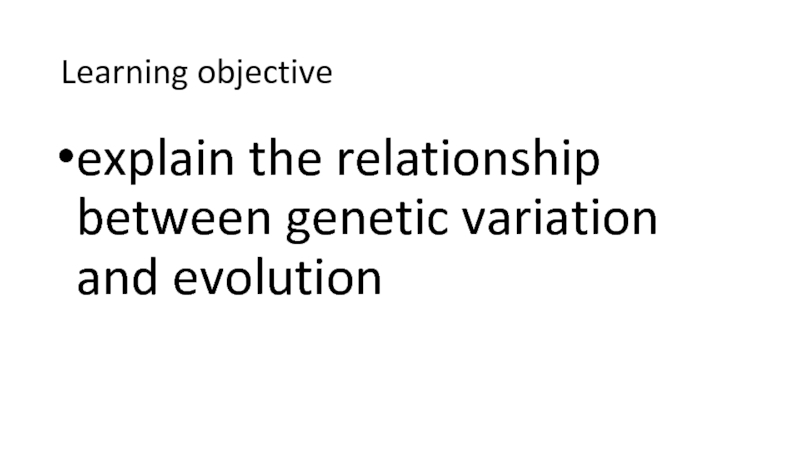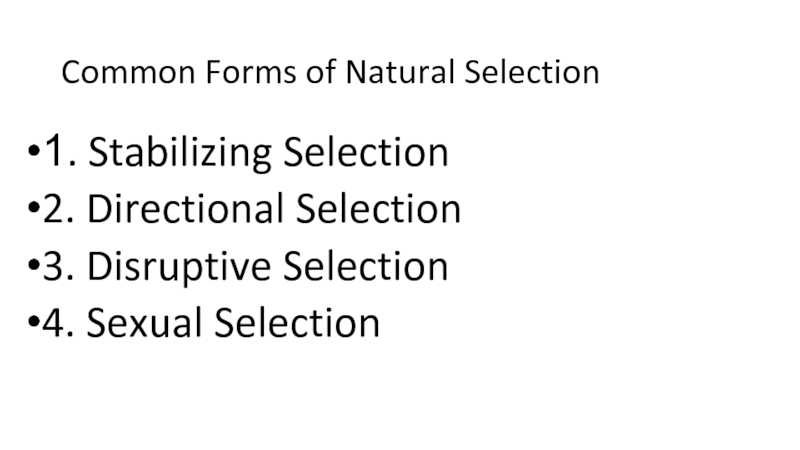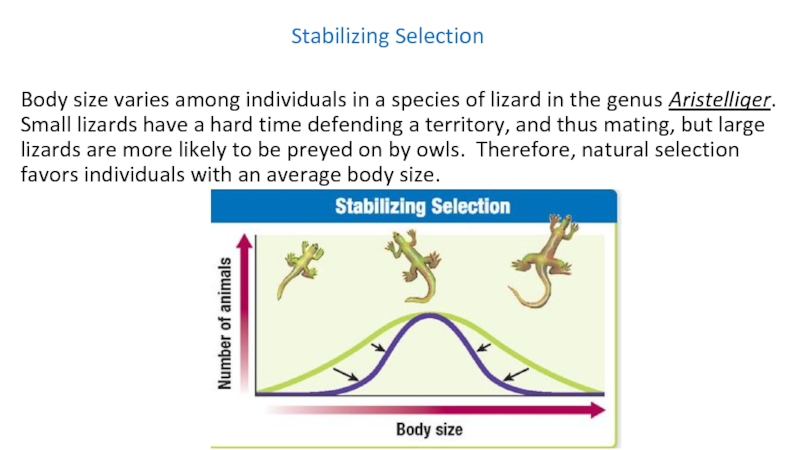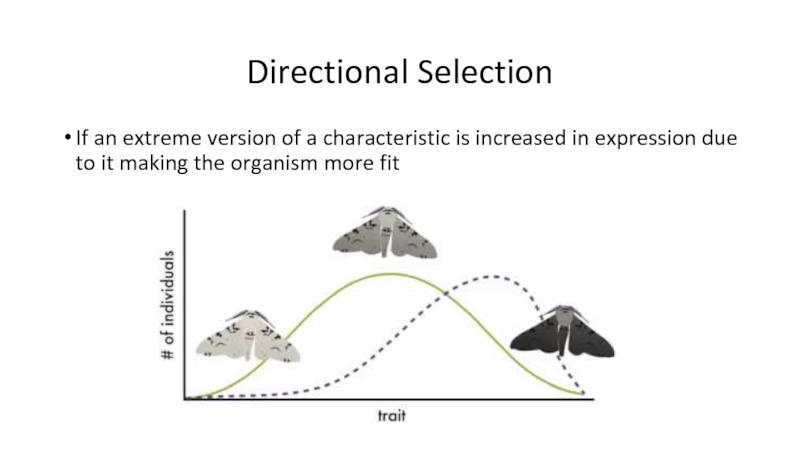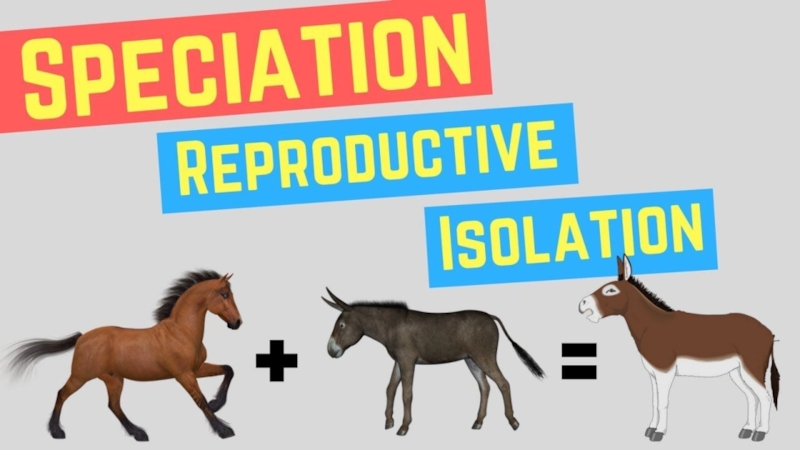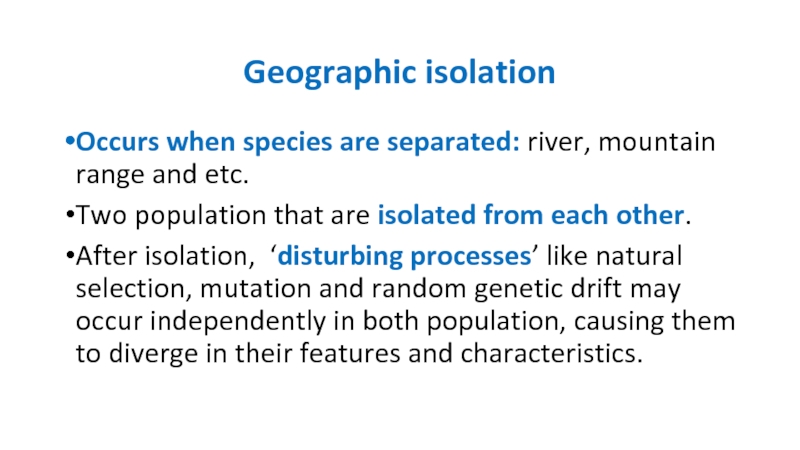- Главная
- Разное
- Дизайн
- Бизнес и предпринимательство
- Аналитика
- Образование
- Развлечения
- Красота и здоровье
- Финансы
- Государство
- Путешествия
- Спорт
- Недвижимость
- Армия
- Графика
- Культурология
- Еда и кулинария
- Лингвистика
- Английский язык
- Астрономия
- Алгебра
- Биология
- География
- Детские презентации
- Информатика
- История
- Литература
- Маркетинг
- Математика
- Медицина
- Менеджмент
- Музыка
- МХК
- Немецкий язык
- ОБЖ
- Обществознание
- Окружающий мир
- Педагогика
- Русский язык
- Технология
- Физика
- Философия
- Химия
- Шаблоны, картинки для презентаций
- Экология
- Экономика
- Юриспруденция
The relationship between genetic variation and evolution презентация
Содержание
- 2. The relationship between genetic variation and evolution
- 3. Learning objective explain the relationship between genetic variation and evolution
- 4. Success criteria Name at least three
- 5. Terminology Natural selection, genetic variation, gene/allele
- 6. Common Forms of Natural Selection 1. Stabilizing
- 7. Darwin’s theory of natural selection depends on:
- 8. Lamarck has an alternative proposal! Darwin believed:
- 9. Natural selection Natural selection operates on
- 10. Natural selection Natural selection causes the
- 11. Selection pressure Predation by foxes is an
- 14. Evolution causes: Genetic variation Mutation Sexual reproduction
- 15. Mutation Mutation: a new mutation will be
- 16. Sexual reproduction Random fusion Crossing over Free assortment
- 18. Stabilizing Selection Occurs when environmental conductions are
- 20. Stabilizing Selection Body size
- 21. Directional Selection May result from changing environmental
- 23. Directional Selection If an extreme version of
- 24. Disruptive Selection Occurs when particular environmental conditions
- 26. Disruptive Selection A population of insects, newly
- 30. Sexual selection A form of natural
- 31. Speciation A species is a population whose
- 32. Speciation causes: isolation Geographic Polyploidy Habitat Behavioral Temporal Reproductive
- 33. Reproductive isolation Closely related species may be
- 35. Geographic isolation Occurs when species are
- 37. Habitat isolation Occurs when two organisms live
- 38. Behavioral isolation Occurs when two animals become
- 39. Temporal isolation Temporal refers to times.
- 40. Polyploidy isolation Type of mutation that from
- 41. Theory about Evolution Gradualism Punctuated Equilibrium
Слайд 4Success criteria
Name at least three ways due to which the
2. Explain interrelation between hereditary variation and evolution.
Слайд 5Terminology
Natural selection, genetic variation, gene/allele variability, genetype, phenotype, mutation, formation
Stabilising selection
Directional selection
Disruptive selection
Слайд 6Common Forms of Natural Selection
1. Stabilizing Selection
2. Directional Selection
3. Disruptive Selection
4.
Слайд 7Darwin’s theory of natural selection depends on:
Overproduction
A struggle for existence
Variation within
Survival of the fittest
Слайд 8Lamarck has an alternative proposal!
Darwin believed:
Variation Adaptation
selects
Lamarck: Environmental causes variation
This is called inheritance of acquired characteristics.
Слайд 9Natural selection
Natural selection operates on individuals, or rather on their
The concept of natural selection is based on differential success is survival and reproduction.
In genetic terms, selection results in alleles being passed to the next generation in proportions that differ from those in the present generation.
Natural selection causes change to gene pools.
Слайд 10Natural selection
Natural selection causes the frequency of certain alleles to
Слайд 11Selection pressure
Predation by foxes is an example of a selection pressure.
Слайд 15Mutation
Mutation: a new mutation will be transmitted in the gametes changing
Слайд 18Stabilizing Selection
Occurs when environmental conductions are largely unchanging.
Eliminates variants and abnormalities
Eliminates the numbers of extremes and favors the more common intermediate forms.
Many mutant forms are weeded out in this way.
For examples: birth weights in humans between 6 and 9 pounds. For babies smaller or large than this, mortality is greater. (London 1935-1945)
Слайд 20 Stabilizing Selection
Body size varies among individuals in a species of
Слайд 21Directional Selection
May result from changing environmental conditions.
In these situations the
Give rise to directional selection, where one phenotype replaces another in the gene pool.
Слайд 23Directional Selection
If an extreme version of a characteristic is increased in
Слайд 24Disruptive Selection
Occurs when particular environmental conditions favour the extremes of a
As a result, it is likely that the gene pool will become split into two distinct gene pool.
Increases the numbers of extreme types in a population at the expanse of intermediate forms.
Слайд 26Disruptive Selection
A population of insects, newly introduced to a forest, is
Spotted Wing Drosophila (SWD) is a “vinegar fly” but unlike other vinegar flies, which attack rotting fruit, this fly damages ripening and decaying fruit. Infestation of fruit reveals small scars and indented soft spots and bruises on the fruit surface. Eggs hatch and larvae develop and feed inside the fruit, causing the flesh to collapse around the feeding site within as few as two days. Fungal and bacterial infections and secondary pest may contribute to further fruit deterioration
Слайд 30Sexual selection
A form of natural selection in which individuals with
Sexual selection can result in sexual dimorphism, a difference in secondary characteristics between males and females of the same species.
Possible evolving of exaggerated traits or ornaments
Слайд 31Speciation
A species is a population whose members have the potential to
a species must be able to reproduce and the offspring MUST be able to reproduce.
Слайд 33Reproductive isolation
Closely related species may be unable to mate because of
The inability of members of a population to successfully interbreed with members of another population of the same or a related species.
Pre – zygotic: different mating ritual, differences times or seasons, sex organs that are incompatible.
Post – zygotic: formed in fertile hybrid.
Слайд 35Geographic isolation
Occurs when species are separated: river, mountain range and
Two population that are isolated from each other.
After isolation, ‘disturbing processes’ like natural selection, mutation and random genetic drift may occur independently in both population, causing them to diverge in their features and characteristics.
Слайд 37Habitat isolation
Occurs when two organisms live in the same area but
Two different species of garter snake that belong to the same genus Thamnophis occur in the same areas, but one lives in a mainly water habitat and the other in a terrestrial habitat.
Слайд 38Behavioral isolation
Occurs when two animals become isolated from each other because
Male fireflies have certain light signal pattern that only the females of their species recognize and respond to-attracting the males.
Слайд 39Temporal isolation
Temporal refers to times.
Two species cannot breed if their
The Western Spotted Skunk and the Eastern Spotted Skunk are similar species that do not interbreed due to one species mating during the summer and the other during the winter.


